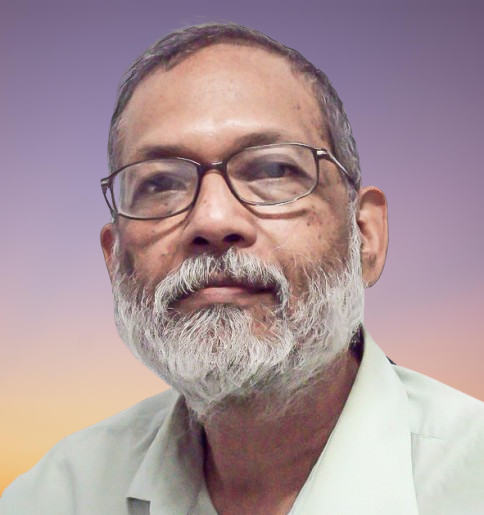Featured 2

Photo: Collected
One may like it, one may not but everyone seems to die in the end. If it happens to everyone, there is not much to be said and no one can be blamed except Allah who is not exactly accountable for His actions to anyone. Meanwhile everyone keeps dying.
That one supposes is not a problem if it's happening to everyone but the problem arises due to faith issues. Not many are Hindus whose bodies are cremated but most are Muslims. They are a simple God fearing lot who want to be buried. And that is where the situation has begun to look like a crisis, at least in Dhaka.
It seems the capital city is running out of land for burial and as a result, the price of burial plots has gone beyond the purchasing capacity of ordinary people. Plainly speaking, just as dying is becoming a fearfully expensive business, burial after death is almost impossibly costly.
Graveyard rates
Banani is not only housing the rich but also ready to bury the same. An average rate was 24 lakhs some years back. But now it has reached Taka I crore for 15 years. For 25 years it is 1.5 crores. These are leases and the land is owned by the Municipality. Meanwhile, authorities say this is to discourage grave preservation. So it's not going to affect the rich who can afford it anyway but the preservation hungry middle class.
Dhaka City North Zone has actually run out of cemetery land but no new cemeteries are being planned yet. There are six cemeteries under Dhaka North. These are Banani Cemetery, Uttara sectors 4, 12 and 14 cemeteries, Mirpur Martyrs' Intellectual Cemetery and the cemetery adjacent to Rayerbazaar mass killing field.
Experts and planners have said that the plan to discourage preservation by increasing graveyard rates doesn't make much sense and more cemeteries need to be planned but the obvious question is, "where is the land?." Given the kind of land price that exists in Dhaka, the chances of more land for burial will be almost impossible. Dhaka is running but of living space, so accommodating the dead can't be the priority.
Multi-storied graves and floating burial spaces?
Dhaka is not the only city to experience such a crisis and some are beginning to act upon it. Two options exist. Multi-storied graveyards like the multi storied apartments that populate Dhaka and the floating cemeteries.
Many European countries have been reusing graves for centuries. In a Jewish cemetery in Prague, when space runs out, a fresh layer of soil is laid out on top of the existing graves to make room for new bodies. The layers have crossed many times and even in 1787, it already had twelve layers of graves stacked on top of each other.
This is now quite common and many cities now have quite famous landmarks of this kind. In Hong Kong, cemeteries are often built on hill slopes to save space. In Japan, one businessman even opened a hotel for the dead where bereaved families temporarily keep the dead bodies while they wait their turn in the queue.
"A true vertical cemetery is the Memorial Necrópole Ecumênica in Santos, Brazil. As of now, it's 32 stories high and has space to house the remains of 25,000 people. When it was built in 1983, it was only a small building, but the demand for above-ground "tombs with a view" was so great that they kept adding extra floors until it became the tallest cemetery in the world."
"Each floor contains 150 tombs equipped with a sophisticated ventilation system and can accommodate up to six bodies. Once the body has decomposed, which usually takes about three years, the family of the deceased can have the body exhumed or transferred to the building's ossuary."
In Brazil this has really caught on and the great legend Pele is buried in one such grave. The Philippines, Taiwan, Israel and many other countries are now into such practices to name a few. Meanwhile, Egypt has also started to build such multi-storied tombs and though there was "Islamic" uneasiness at first, the fact that permanent graves are not encouraged in Islam has helped the multi storied cause.
Hong Kong is one city that comes close to Dhaka for the lack of its burial space and since 2012 they have moved into floating burial sites which have become very popular.
What these indicate are realities and people coping with them. In Bangladesh, many people return to their village home to bury the dead because they can't afford the burial rates. But an increasing number of people are now multi-generational city dwellers and the link with the villages are gone. Unless the city plans only for the rich, multi-storied burials are only a matter of time in arriving. And with Buriganga next door, can floating graves be far behind?

























Leave a Comment
Recent Posts
From the British High Commissi ...
From December 26-30 of last year, WildTeam had the honour of hosting H ...
Why Southeast Asia’s online sc ...
Cambodia’s arrest and extradition of a powerful tycoon accused o ...
LC openings surge as dollar crisis eases, but settle ..
US President Donald Trump has been discussing "a ran ..
Delhi and Dhaka need to find an off ramp
Moin re-elected DCAB President; Emrul Kayesh new GS